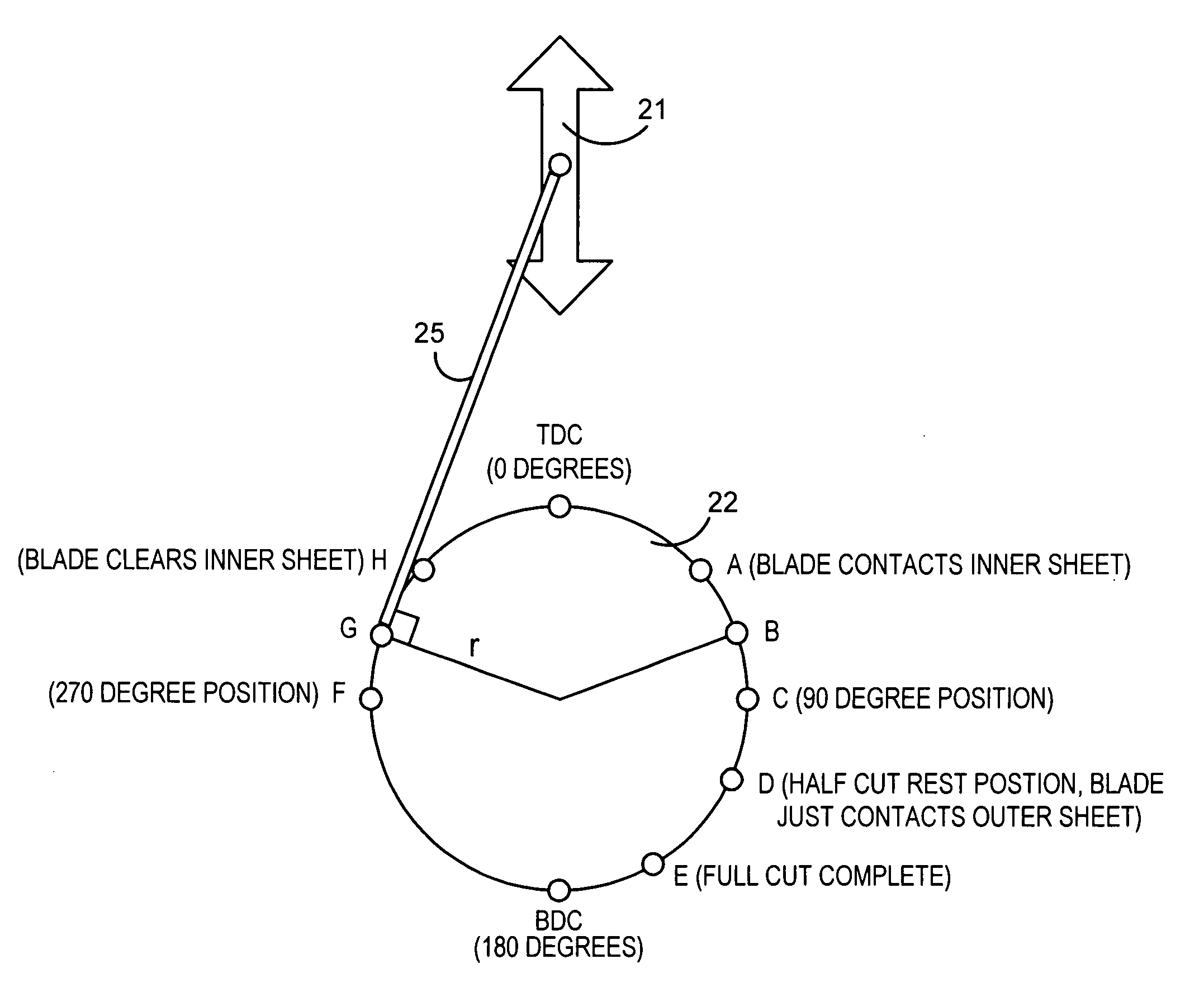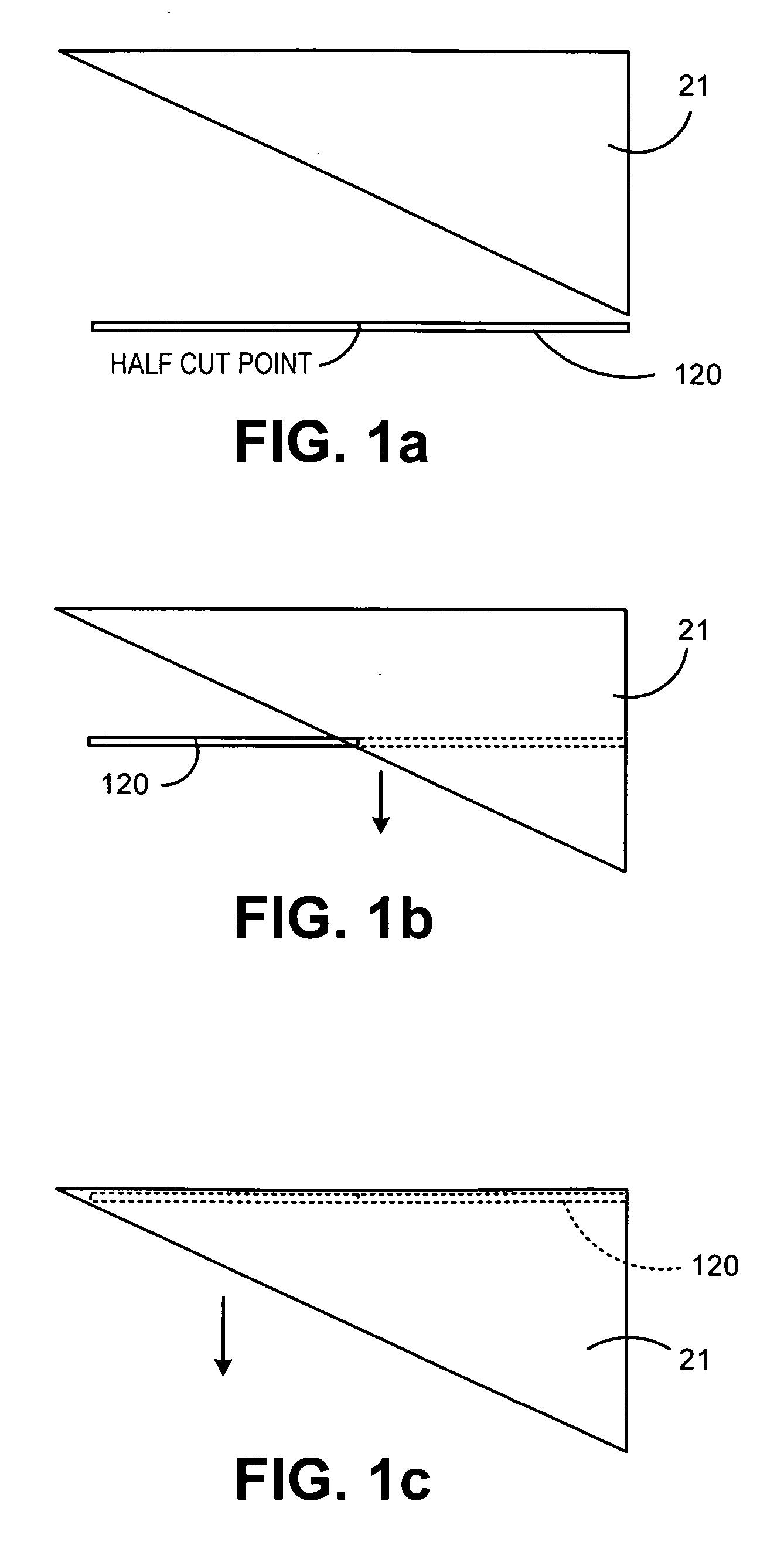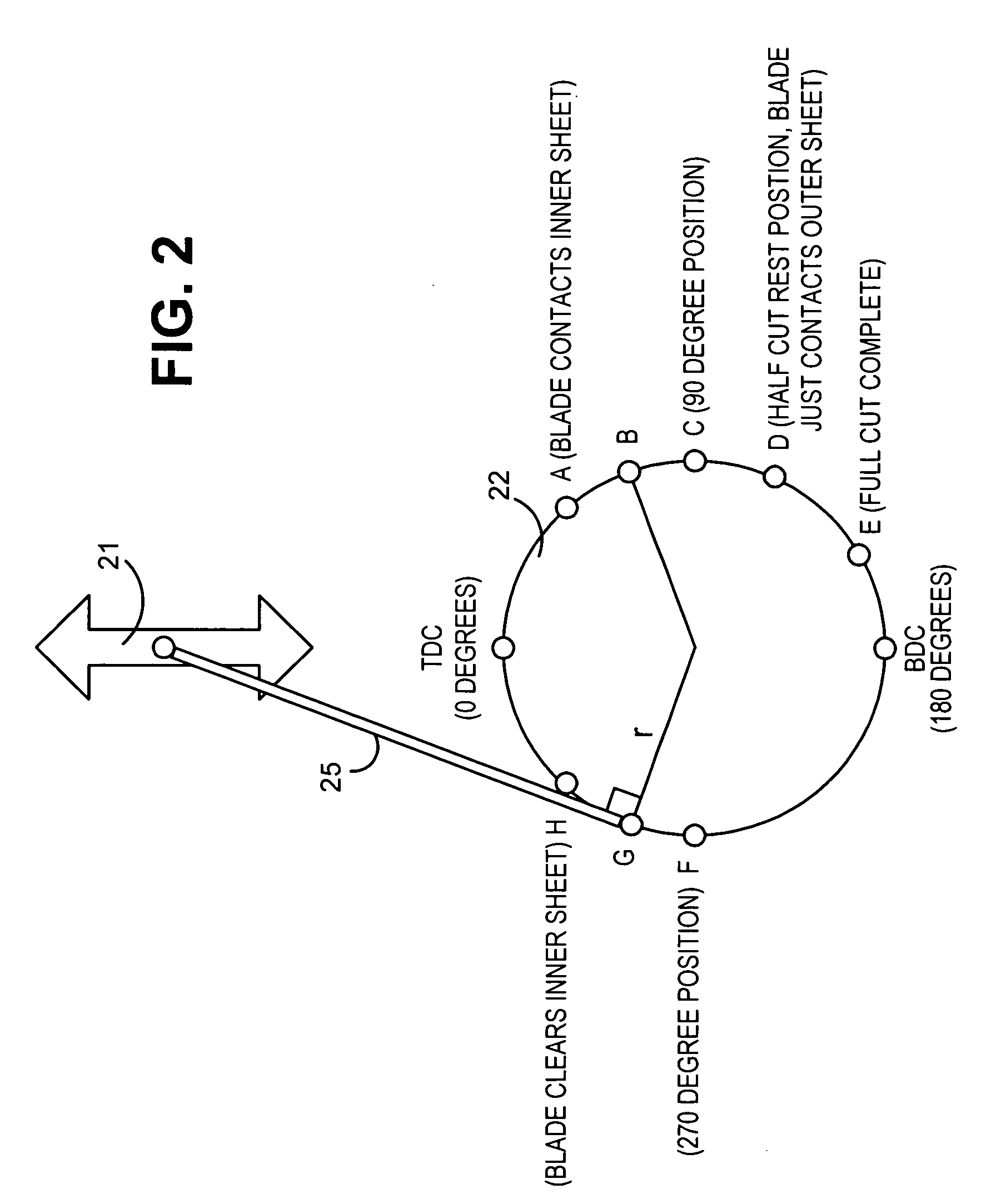Positioned based motor tuning for a guillotine cutter mechanism
a guillotine cutter and positioned-based technology, applied in the direction of electric controllers, instruments, ignition automatic control, etc., can solve the problems of difficult, if not impossible, in determining the tuning coefficient that provides satisfactory or optimized motion control performance, so as to improve the tuning of servo motors, reduce lag or overshoot, and reduce the effect of lag
- Summary
- Abstract
- Description
- Claims
- Application Information
AI Technical Summary
Benefits of technology
Problems solved by technology
Method used
Image
Examples
Embodiment Construction
[0023]FIGS. 1a-1c depict the guillotine cutter 21 through a downward cutting motion, starting at a beginning position in 1a, to a finished cut position in 1c. Guillotine cutter blade 21 preferably has an edge that is vertically inclined at an angle above the path of web 120. As the blade 21 is lowered (FIG. 1b) the blade 21 edge comes into contact with the web and cuts across its width (from right to left in FIGS. 1a-c). In FIG. 1c, the blade has reached its bottom position, and the whole width of the web 120 has been cut. In an alternative scenario, blade 21 can be stopped at the position shown in FIG. 1b, and only the right half of the web has been cut. This technique is used when the web 120 is comprised of side-by-side sets of sheets, and where only one of the sheets belongs to the mailpiece that is currently being processed. The other half of the web 120 can be cut when the system is ready to start processing the collection of sheets for the next mailpiece.
[0024]FIG. 2 is a dia...
PUM
| Property | Measurement | Unit |
|---|---|---|
| Angle | aaaaa | aaaaa |
| Angle | aaaaa | aaaaa |
| Angle | aaaaa | aaaaa |
Abstract
Description
Claims
Application Information
 Login to View More
Login to View More - R&D
- Intellectual Property
- Life Sciences
- Materials
- Tech Scout
- Unparalleled Data Quality
- Higher Quality Content
- 60% Fewer Hallucinations
Browse by: Latest US Patents, China's latest patents, Technical Efficacy Thesaurus, Application Domain, Technology Topic, Popular Technical Reports.
© 2025 PatSnap. All rights reserved.Legal|Privacy policy|Modern Slavery Act Transparency Statement|Sitemap|About US| Contact US: help@patsnap.com



